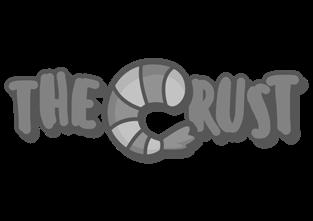
4 minute read
A Historical Review
from THE CRUST - ISSUE #5
by THE CRUST

monodon with an excellent productivity rate. The monodon cultivated by Moana Technologies resulted from the broodstock originating from the Indian Ocean, Indonesia, and the Philippine Sea.
The Introduction of Vannamei
Vannamei (Litopenaeus vannamei) was officially introduced by the Indonesian Government in 2001. This native species of the Pacific Ocean began to be widely cultivated by shrimp farmers as a substitute for monodon, which production had been rapidly declining since 1996. Vannamei is also considered superior to monodon for several reasons, including a high survival rate, SPF shrimp fry, higher stocking density, domesticated broodstock, better disease resistance, and low Feed Conversion Ratio (FCR).
According to Mr. Djoko, the arrival of vannamei induced optimism in the shrimp farming industry, especially in the early days when the results were beyond expectation. Based on Mr. Djoko’s experience, he once cultivated vannamei in HDPE-lined ponds measuring 40 m x 80 m, with 15 units of paddlewheels, stocking density of 150 - 200 PLs/m2, which resulted in 9-10 tons/pond production. “In the early time, vannamei farming’s results were good, as with the case of monodon farming in the 1980s. But ultimately, the cultivation of vannamei went through a difficult time due to the diseases. As a matter of fact, all diseases that affected monodon also affected vannamei,” said Djoko.
Even though monodon farming had receded, Mr. Djoko admitted that he was very interested if it would ever be developed again. According to Mr. Djoko, representing the shrimp farm technician’s point of view, monodon farming is more manageable than vannamei farming because the stocking density is not too high, and the maximum density is only around 50 individuals / m2. “But perhaps for entrepreneurs, the productivity rate is slightly less attractive. Therefore, if the monodon’s selling price can reach a higher level, it might become more interesting for entrepreneurs,” he said. In addition to the higher price, he hopes the monodon fry has good quality and an SPF status. These will help avoid mistakes like in the past when monodon was very susceptible to disease and had a low Survival Rate (SR).
Mr. Bong also explained the difference between vannamei and monodon. According to him, they are different species with different market niches. Vannamei can be intensified in terms of production. Meanwhile, monodon cannot be intensified in a small area but can be cultivated to a bigger size with high demand in some countries.
Currently, Mr. Bong’s company, PT. Tri Karta Pratama & Benur Top Group are developing monodon farming in lTHE CRUST - UTE, GEMILANG
Indonesia and are temporarily focusing on traditional & semi-intensive ponds in South Sulawesi, North Kalimantan, and Aceh. Farmers in these three provinces have used monodon fry from natural broodstocks for over 20 years. But, Mr. Bong said, ideally, shrimp farming should have used domesticated broodstocks and “highly improved genetics” similar to vannamei shrimp. More than nine international companies are producing genetic strains with highly improved growth and disease resistance breed.
Related to this, Moana Technologies Ltd., the leading manufacturer of the new generation monodon breed from the Big Island, Hawaii, has been producing broodstocks for countries such as Vietnam, Bangladesh, and the Philippines since eight years ago. They’re doing experiments right now testing their broodstocks in India and Indonesia. “As for a high-quality monodon fry, PT. TKP hatcheries located in South Sulawesi and North Kalimantan are producing and selling monodon fry starting from PL12 to PL15 with initial results showing potential to increase the overall monodon production in Indonesia,” Mr. Bong said while promoting.

Shrimp Feeding
To determine how much feed your stock needs, the most widely used method is calculating feed needs using the Feeding rate (FR). FR shows how much feed a shrimp needs to live and grow optimally. The FR itself is determined using a table tied to the size of the shrimp at the current time. An FR formula should look like this:
A simple example will be if you have 5.000 kg of shrimps at 10 gr MBW. The %FR is obtained by matching the current MBW with the specific FR from the table. This means you need to put in 161,5 kg of feed for that day for the shrimp to live and grow optimally.
However, FR varies with the shrimp’s genetics, feed formulae, feeding methods, and site characteristics. So, a good farmer should have its own adapted FR obtained by their historical data across multiple cycles to get a more precise FR for their site.
Concurrently, this formula can also predict how much biomass you have in your pond. Once you find the amount of feed per day your shrimps can ingest, it is a matter of plugging in the numbers to get your biomass prediction. This is also useful to determine your Survival Rate (%SR) and your stock’s health.
Another use of this formula that few farmers take advantage of is to use the calculation to target your growth.
How much should you feed your shrimps?
For example:

Today you have 5.000 kg of shrimps at 10 gr MBW feeding at 161.5 kg of feed per day. From this data, you can extrapolate how many shrimps you have in your pond (5.000 kg ÷ 10 gr = 500.000 shrimps). Then you set your target to grow them to 12 gr MBW in 7 days. If the SR is intact and the target is achieved, you should have 6.000 kg of shrimps in your pond by next week. Therefore, 6 tonnes of shrimp at 12 gr MBW would need 175,2 kg feed. Knowing this, now you just need to pace your feeding plan so that on the 7th day, you will be feeding them 175,2 kg of feed. Next, you need to sample your shrimps and see their current MBW; if they’re at 12 grams MBW, then you would have achieved your goal. But, if the deviation from the target is too much, something must be amiss.




